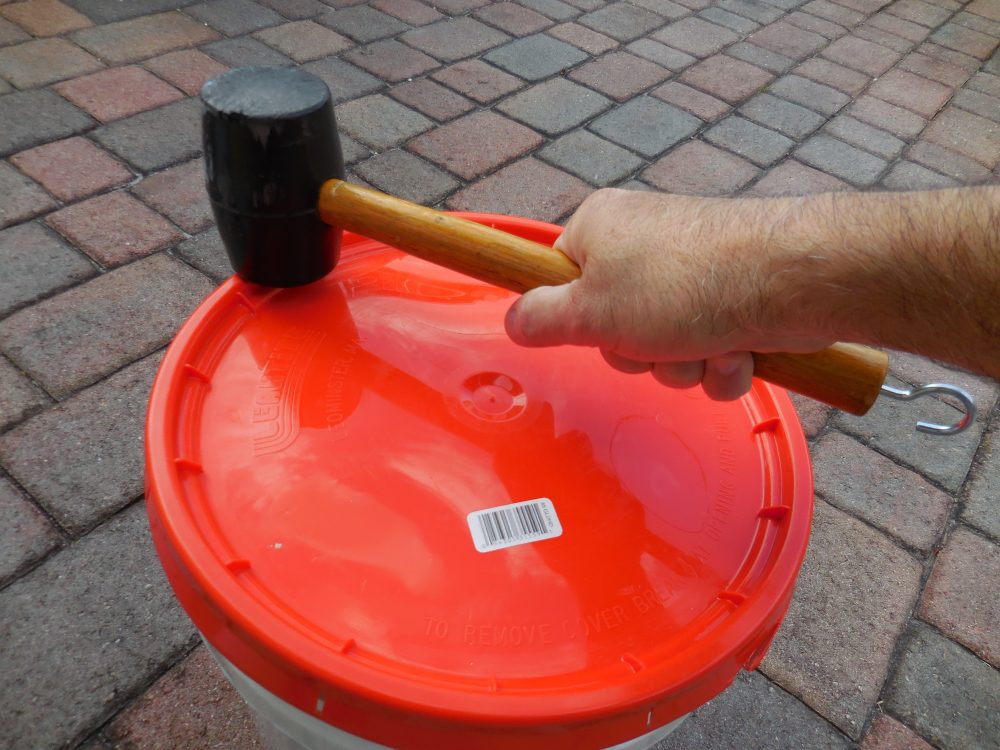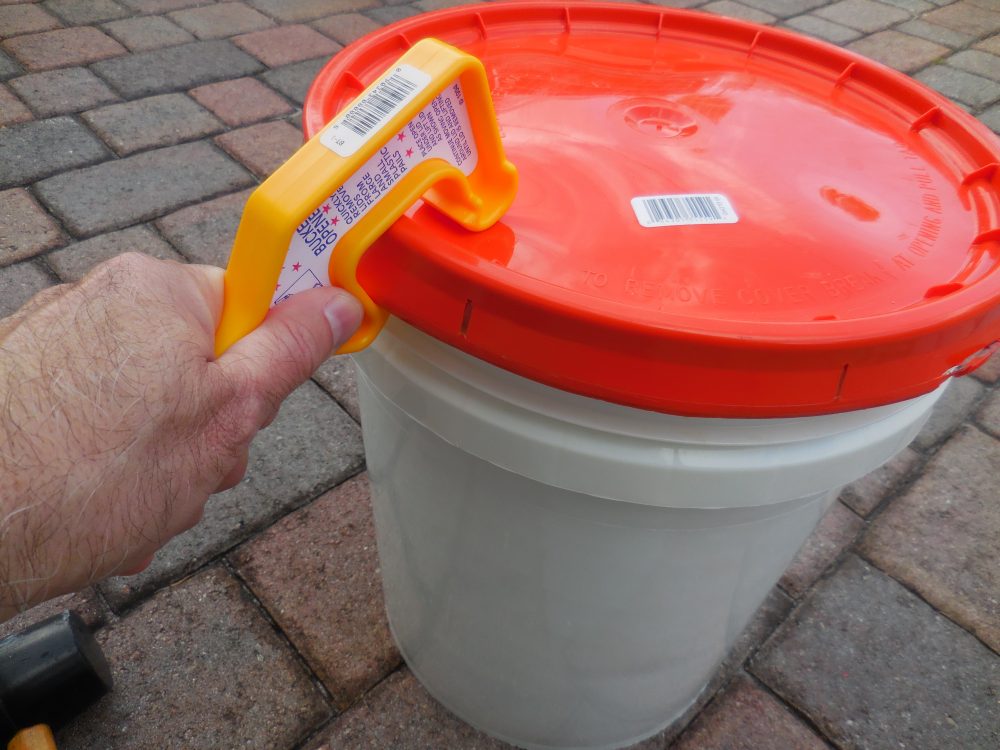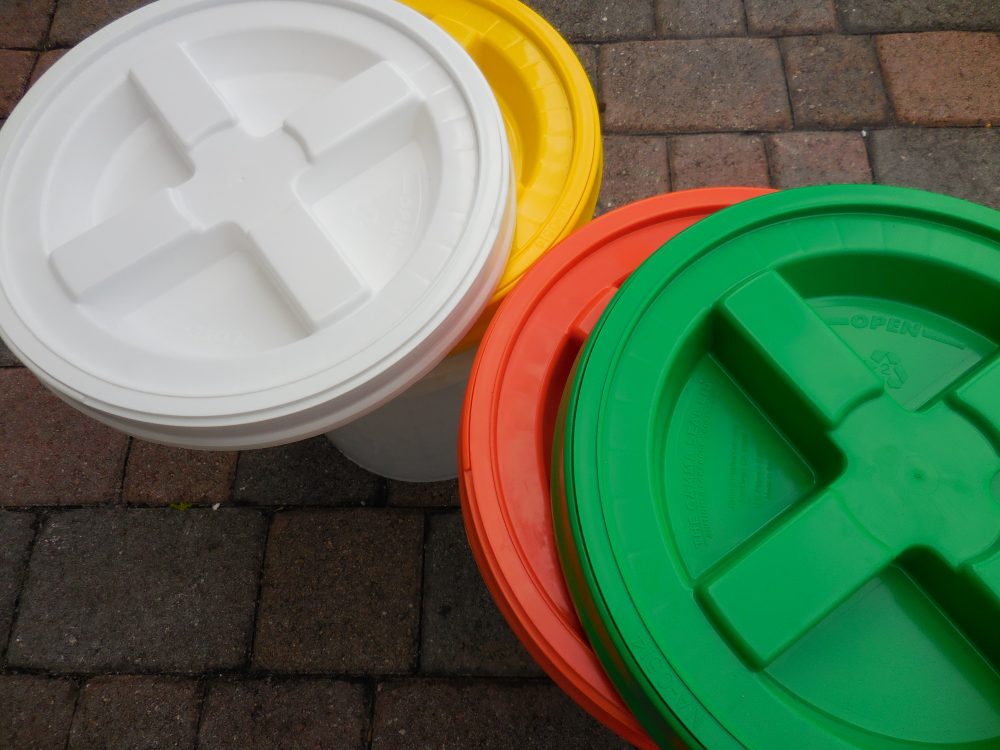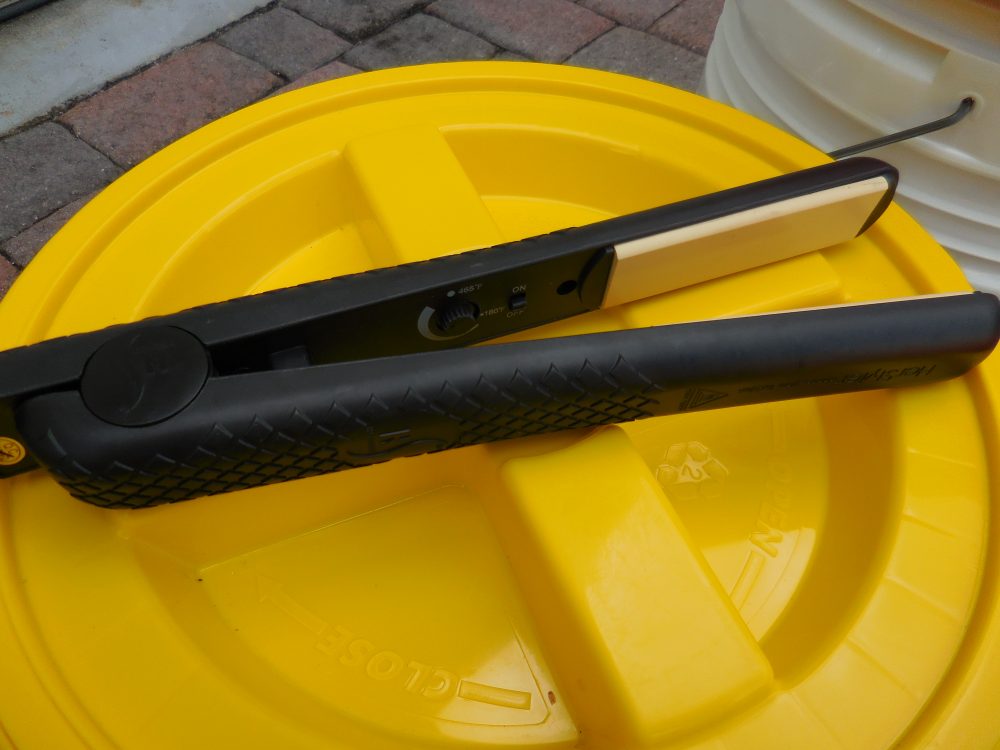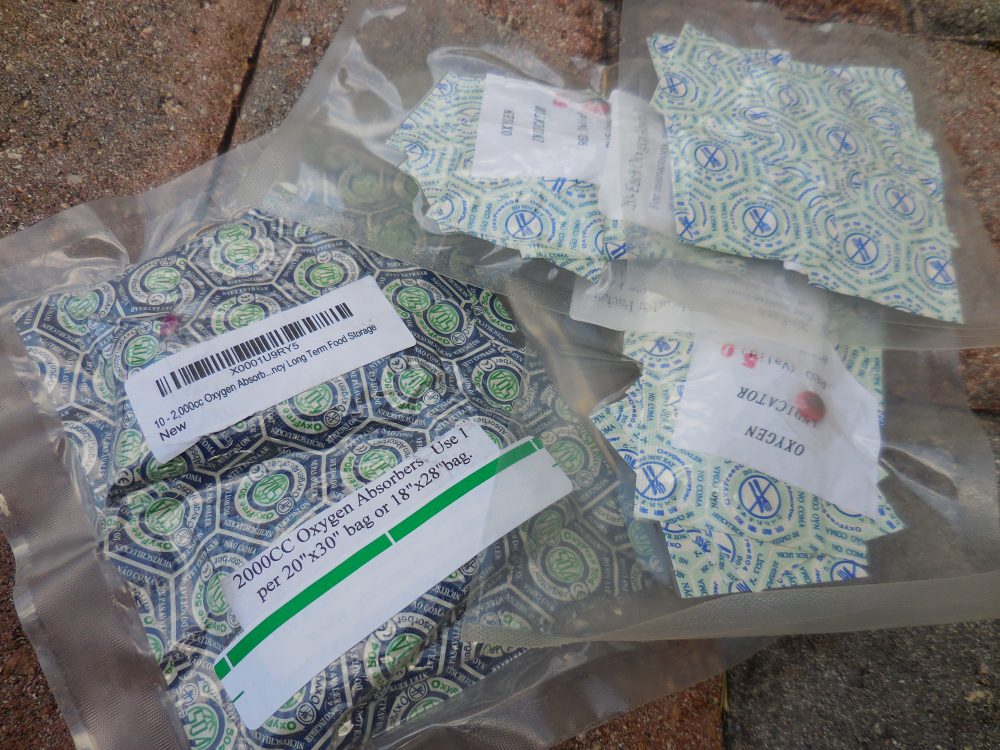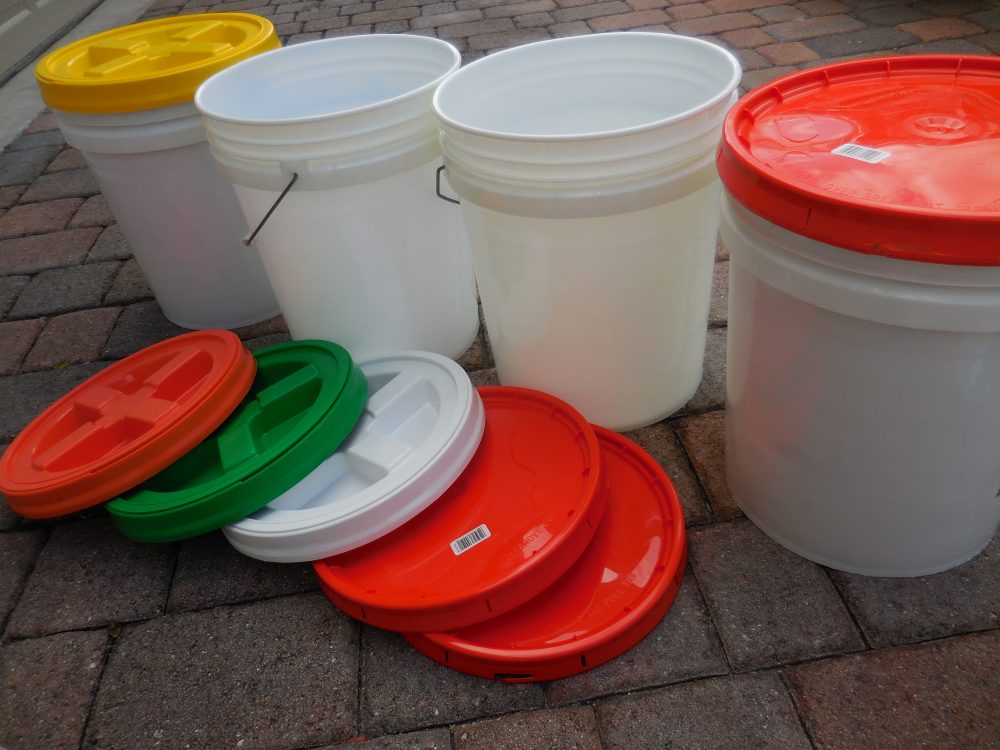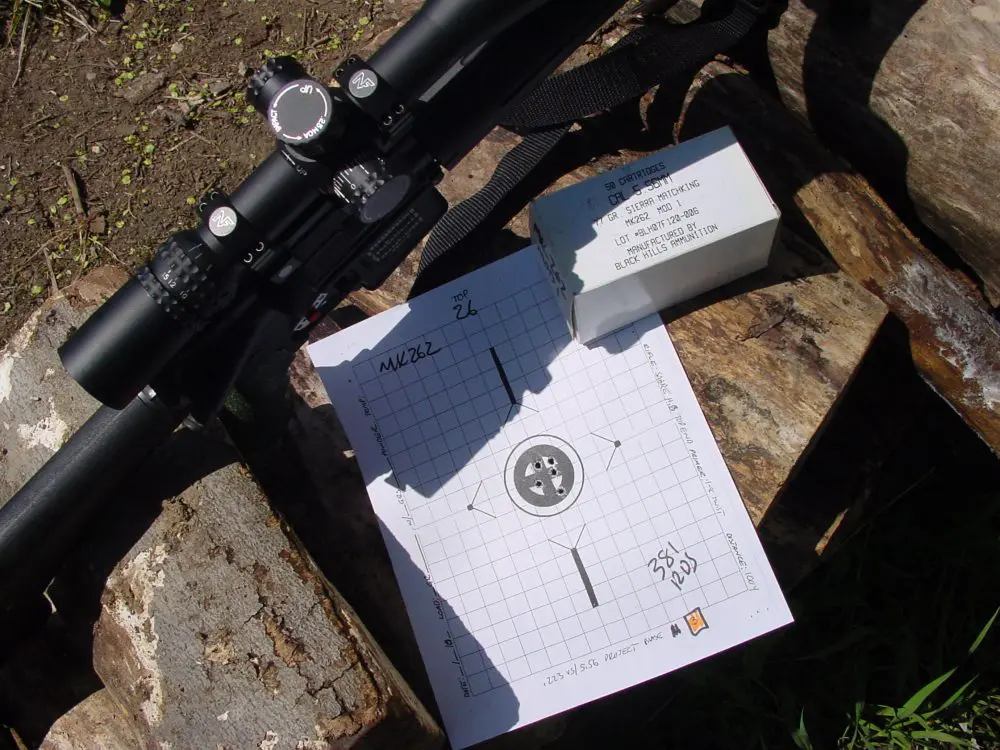Rubber mallets provide an excellent way to close buckets without damaging lids.
Disasters are always short-term—until they’re not.
Because of this inconvenient reality, long-term food security should always be a major priority in every survival plan, though many people plan only for the short-term, if they plan at all.
Many people have somehow convinced themselves that, regardless of the severity of the situation, help will inevitably arrive and everything will be just fine. These unrealistic expectations are commonly based on misguided notions of how the real world works, especially in the aftermath of a crisis.
Having access to long-term food stores can definitely increase your chances for survival in even the most serious crisis situations. But storing that much food is not without its complications, and can also become very expensive. Figuring out what to store and how to store it can often be the most difficult part of the entire process.
Let’s take a look at the basics of long-term food security, with specific emphasis on tips, ideas, and suggestions to help you start making your preparations, while also saving some serious money.
Use bucket openers for quick and easy removal of all sizes of bucket lids. Slowly work your way around the bucket with the opener until the lid starts to pop off.
Table of Contents
FOOD TRUTHS
We’ve all seen the people on reality TV shows who survive for many weeks with little or no food. Some of these folks make it look relatively easy, others not so much. Going for long periods of time without sufficient calories is a bit more complicated than what you might see on a TV show.
The amount of time a person can survive with minimal caloric intake often depends on the circumstances, including environmental factors, weather conditions, and the overall physical health of the individual(s) involved. In general, after just a few days without sufficient calories, a person’s physical and mental performance usually starts to decline.
Reduced to its most fundamental function, food is fuel for the body, and that includes the brain. Fail to consume sufficient calories over an extended period of time and you can expect serious weight loss, depression, decreased ability to think clearly, and eventually organ failure and a miserable death. For this and many other reasons, long-term planning is well worth your time and effort.
Two-part Gamma Lids offer sensible alternative to fully sealed lid. Lid is pounded onto the bucket, while lid’s screw-on, screw-off design provides airtight seal. Different lid colors help identify contents at a glance.
LONG VS. SHORT
Food planning for the short term (30 days or less) is really important and will normally be your first line of defense. For this initial period, you’ll most likely maintain an inventory of store-bought pre-packaged foods that you routinely eat. Rotate these food stores as you consume them—using the oldest first and positioning the newer products for later use.
Do this, and you’ll be far ahead of most of your unprepared neighbors (It’s estimated that 97% of the American public is unprepared and maintains no emergency supplies of food or water).
Planning for the short term is a good thing, but if that’s all you do, you’re placing yourself at a serious disadvantage. It’s one thing to prepare for a passing storm or a minor power outage. It’s quite another to plan for a major disaster that could disrupt even a portion of the supply chain, the electrical grid, or the multitude of other vital services we all rely on.
But regardless of the cause, if things take an ugly turn and the cavalry arrives later than expected—or fails to arrive at all—you’ll likely find yourself in a whole lot of pain if you failed to plan how to feed yourself and your family during a crisis that may extend from weeks to months.
Standard electric hair straightener heat-seals Mylar bags. Look for a model with adjustable temperature control and experiment with different settings. Too high a temperature may damage Mylar bags and produce a faulty seal. Recommended sealing temperature is approximately 400 degrees.
WHERE TO START
Getting ready for an extended crisis is not as difficult as you might imagine. Once your goals are clear, you can develop a detailed action plan and break it down into small, manageable steps. Here are some suggestions to get you moving in the right direction:
- Figure on no less than 2,000 calories per person, per day. This estimate can always be adjusted according to the anticipated conditions and circumstances.
- Carefully select foods that contain a large amount of calories for their relative portion size. For survival purposes, the higher the food’s caloric content, the better.
- Focus on shelf-stable foods that are high in quality nutrition. This is the body’s fuel, and your survival may depend on it.
- Avoid junk foods. You may be tempted to opt for familiar, highly processed foods. Although many of these products have an extended shelf life, they contain limited nutrition and offer few tangible benefits other than filling your stomach.
- Look for foods you can buy in bulk to package yourself. Think white rice, beans, oats, grains, freeze-dried fruits/vegetables, some pastas, and dried fruit. Many other options exist, so research different types of food and see what works best for you and your family.
- Test and experiment. Before you commit, sample the food options to ensure they work for your needs.
- Add variety. Rice and beans store very well, and when combined make an excellent source of high-quality protein that will keep you alive, but eating the same thing every day can get tedious. Adding variety lets you combine different ingredients, tastes, and textures to help avoid food fatigue.
- Take it one step at a time. You don’t have to establish your entire long-term food stores in one week. Get started and keep building on your efforts.
- Label your inventory. Get into the habit of clearly labeling all containers. Include dates of storage and any other relevant information.
While commercially available emergency food options are an easy and convenient way to build up your long-term food supply, these pre-packed kits can be expensive and may not offer the options you want. For example, you may be forced to accept predetermined meal choices and serving sizes. Do your research and consider the benefits and costs before committing your hard-earned dollars to any particular option.
Mylar bags sealed with oxygen absorber inside the bag help protect food from mold, oxidation, and bugs. It’s recommended to use one 2000cc oxygen absorber in each 20×30-inch Mylar bag. Quality oxygen absorbers come in vacuum-sealed bag to ensure freshness.
SHELF-STABLE FOODS FOR THE LONG HAUL
Some foods are natural choices for long-term storage, especially if you can buy them in bulk and store them yourself. This not only saves you money, but also provides you with the flexibility to make your own food and portion choices. Here is a basic list of some calorie-dense, shelf-stable foods:
- White rice: When stored properly, white rice will maintain its nutrient content and flavor longer than other types of rice.
- Dried beans: There’s a wide selection to choose from—black, navy, red, pinto, and kidney. Buy a little of each and test them in your kitchen to make sure you and your family like them before you buy them in large quantities. Also make sure they agree with your digestive system. Few things are worse than a closet full of a food you can’t eat. Rice and beans can easily be the most important part of your long-term emergency food stores.
- Sugar: This important nutrient should be sealed in airtight containers to minimize moisture.
- Honey: Properly sealed honey will store indefinitely.
- Dried herbs, salt and spices: No matter what foods you store, some basic seasonings will make a big difference.
- Oats: Provide a concentrated source of fiber and nutrients, and will last for several years if stored properly.
- Dried pasta: Provides necessary carbohydrates and can be stored for up to two years.
In addition to these basics, consider adding canned meat; tuna; peanut butter; powdered, sweetened, condensed and evaporated milk; and freeze-dried fruit and vegetables. Canned goods do not have the extended shelf-life of rice and beans, but they still have a place, and add value to your food stores.
GripWorks Ergonomic bucket handles provide a durable snap-over grip for five-gallon buckets and a comfortable alternative to standard bucket handles.
LONG-TERM STORAGE SUPPLIES
As with everything else, having the right supplies makes the job at hand far easier. Here’s a list of useful supplies:
- Five-gallon buckets. Look for heavy-duty, food-grade, BPA-free plastic. Avoid used buckets unless you are 100% certain they are safe to use for food storage.
- Removable air-tight sealed lids for your buckets.
- Heavy-duty Mylar bags in different sizes.
- Oxygen absorbers (2000cc for 20×30-inch bags).
- Rubber mallets in different sizes.
- Bucket openers. These are inexpensive and easy to obtain.
- Electric iron or hair straightener for sealing Mylar bags.
- Manual or electric pump to vacuum as much air as possible out of the Mylar bags before sealing them.
- Ergonomic bucket handles, which make carrying heavy buckets more comfortable on your hands.
Food-safe five-gallon buckets and heavy-duty lids are the most common way to store long-term food supplies.
WRAP-UP
Long-term food security is a big deal. While storing food for an extended crisis can be challenging, the payoff can be well worth the effort. With a bit of planning and some basic preparations, you can prepare for yourself and your family while saving money and learning new skills. Stay safe and be prepared.
LONG-TERM FOOD OPTIONS AT A GLANCE
Packing Your Own Long-Term Food
PROS
- Cost: You can save hundreds, if not thousands, of dollars by packing bulk food items yourself.
- Selection: Packing your own food choices gives you flexibility and lets you focus on foods you actually like. You won’t be stuck with someone else’s choices.
- Flexibility: Work at your own pace and build up your food supply over time as you can afford to do so.
- Portions: When you pack it yourself, you can control the portion sizes. Mylar bags and oxygen absorbers come in several convenient sizes. Choose the portion sizes that work best for you.
CONS
- Spoilage and waste: Food can easily spoil if you don’t pack and seal it correctly.
- Time and effort: A considerable investment of time and effort is required to shop for your food and supplies and to package the food.
Buying Pre-Packaged Food Supplies
PROS
- Turnkey: Bring it home, put it away, and you’re done.
- Very long shelf life: Commercially packed emergency food can have a shelf-life of five to 30 years depending on the products and storage conditions.
- Variety: Although many choices will already have been made for you, most of these kits contain a varied supply of foods.
- Meals ready to eat: Kits containing prepacked meals may in some instances help you avoid the inconvenience of cooking.
CONS
- Costs: These kits can be very expensive.
- Not cost effective for short-term emergencies.
- Bulk packed items must be used once opened.

PACKING YOUR FOOD
One of the easiest and most cost-effective ways to store long-term food is to use five-gallon plastic buckets with Mylar bags. Follow these steps:
- Start with a new five-gallon food-grade, BPA-free bucket, or one that you know has not been used to store anything other than food. If you are filling more than one at a time, immediately apply a label (contents and date) to your bucket to avoid confusion.
- Open a 20×30-inch Mylar liner and, being careful not to damage the Mylar bag, begin to open it inside the bucket, flattening out the bottom of the bag along the bottom of the bucket.
- Fill the Mylar liner with your dried goods (rice, beans, etc) and let the material settle.
- When the Mylar bag is filled, start to seal the bag along the top seam, but leave about a three-inch opening on one side to let air out. Throw in your oxygen absorber and begin compressing the bag. To take out even more air, use an electric air pump to pull out the remaining air. At this point, seal the opening (Oxygen absorbers come in sealed packages for a reason. Before opening these packages, have all your other materials ready to go).
- Confirm the integrity of your seal and set the bucket aside for 24 hours. The next day, your Mylar bag should be airtight and hard to the touch.
- The last step is to secure the plastic lid with your rubber mallet. Store your buckets in a cool, dry place away from light, heat, humidity, pests, and other environmental factors. Check your inventory of stored foods periodically to ensure none of the buckets have been compromised.
Richard Duarte is an urban survival consultant, writer, and firearms enthusiast. He’s the author of Surviving Doomsday: A Guide for Surviving an Urban Disaster, and the Quick-Start Guide for urban preparedness. For the latest news and updates, connect with Richard on www.quickstartsurvival.com.

